Search Results for Tag: Alaska
Arctic icon in decline
As I plan my coverage of this year’s annual UN climate conference, this time in Peru, a news item from WWF pops up in my mail box. The organization is concerned that the number of polar bears in the Beaufort See in Alaska and in north-western Canada has dropped by around 40 percent in the last ten years. Now that is a very worrying statistic.
It is based on a study published in the journal Ecological Applications: Polar bear population dynamics in the southern Beaufort Sea during a period of sea ice decline.
In 2004, it seems 1,500 polar bears were counted. The latest count showed just 900. Declining sea ice and a lack of prey seem to be the likeliest causes. Another piece of evidence to justify the decision in 2008 to list polar bears under the US Endangered Species Act.
WWF fears the worrying trend will continue if climate change is not halted. There are only between 20,000 and 25,000 polar bears left in the world. With the average air temperature in the Arctic a good five degrees centigrade higher than it was a hundred years ago, it is hardly surprising that nature is struggling to cope. As the sea ice declines, the bears are losing their habitat. You might also remember the pictures of all those walruses on the beach a few weeks ago. They too, were affected by the decline of the sea ice where they usually rest between dives.
So what can we do to halt the decline in the polar bear population? This brings me back to the forthcoming climate conference in Peru. I am finding it difficult to arouse interest in this year’s meeting. “Paris next year is the important one”, I hear. So does climate action just get put on hold for another 12 months? Tell that to the polar bears. One single conference cannot save the world from the climate catastrophes that could lie ahead if the world does not manage to reduce its emissions drastically in the next few years. UNEP’s “Emissions Gap Report 2014”, just published yesterday, says we have to be carbon-neutral by the 2nd half of this century to keep temperature rise below two degrees centigrade. There is still a huge gap between the pledges made by countries within the UNFCCC framework and what is necessary for that. Emissions would have to peak within the next ten years, says the UNEP report, based on the latest IPCC data. Otherwise we risk severe and irreversible climate change with all the droughts, floods and other impacts that come with it.
Given the need for urgent action, I fail to understand how anyone can say “forget Peru, wait for Paris”. I would be the first to stress that these conferences alone cannot halt climate change. The switch to renewable energy is already underway. But ultimately, governments have to agree to binding targets. We have seen encouraging signs from the top emitters China and the USA. Without those international negotiations, this is unlikely to have happened. Let us take the Peru conference as an opportunity to focus world interest on the urgency of climate action. Countries have to keep doing there homework. I don’t know if we will be able to turn our energy policies around in time to save the bears. But if they are to have any chance – at the risk of sounding clichéd: the time for action is now, and any major climate event is a chance to say so.
Berlin Wall – Hope for Arctic?
The statement by veteran Arctic researcher Peter Wadhams that the Arctic could be ice-free in summer as early as 2020 sparked a lot of discussion. Recently I had the chance to talk to Professor Stefan Rahmsdorf, Professor of Physics of the Oceans and head of Earth System Analysis at Germany’s Potsdam Institute for Climate Impact Research (PIK) about Wadham’s forecast.
![]() read more
read more
Can UN and EU take the heat off Alaska?
It is with a heavy heart that I write this first blog post since my holiday, catching up with the latest climate news. A piece by Alex Kirby of Climate News Network drews my attention to the fact that temperatures in Barrow, Alaska, one of the first places to feature on the Ice Blog when it was created in 2008, have risen by an astonishing 7°C in the last 34 years (looking at the average October temperature). As Alex Kirby puts it, “an increase that, on its own, makes a mockery of international efforts to prevent global temperatures from rising more than 2°C above their pre-industrial level”. We need more climate action
![]() read more
read more
Arctic methane: time bomb or “boogeyman”?
When the Ice Blog was launched in 2008, one of the first posts from a trip to Alaska entitled “Ice-Capades and Alaska baking with methane?” included a visit to frozen-over “Eight-mile Lake” in the Denali national park, where scientists Katey Walter and Laura Brosius were measuring methane emissions from melting ice and permafrost. The young “climate ambassadors” I was travelling with helped her to set up “umbrella traps” and capture bubbles of methane coming to the surface. The “proof of the pudding” was setting a match to the gas and watching it catch light. An interesting experiment. But the subject has huge wide-ranging implications. Methane is also a greenhouse gas 25 times more powerful than CO2. Walter and others have since recorded numerous methane seeps in Alaska and Greenland. As global temperatures increase, the permafrost thaws, potentially releasing the gas stored both in the permafrost on land and in the form of methane hydrates under water.
Since that Alaskan trip, methane has beconme an increasingly “hot topic”, with more research being conducted and data collected. The reservoir of methane stored under the Arctic ice and permafrost is huge. And there is increasing scientific evidence that with the world warming, this reservoir is not going to stay there for ever. The concentration of atmospheric methane has increased dramatically in the last 200 years – especially in the Arctic. In 2008, scientists came up with a scenario where up to 50 gigatonnes of methane could be released abruptly from the East Siberia Arctic Shelf (ESAS) because of the melting of permafrost which had hitherto kept it safely sealed in.
Fountains of methane
In 2011, a joint US-Russian expedition surveying the seabed of the East Siberian Arctic Shelf off northern Russia was surprised to observe fountains of methane rising to the sea surface from beneath the seabed. At that time, scientists expressed concern that with the melting of Arctic sea ice and permafrost, the huge methane stores might be released over a relatively short period of time.
The SWERUS-C3 expedition headed by Örjan Gustafsson from Stockholm University is currently underway in the Laptev Sea, where they have discovered “vast methane plumes escaping from the seafloor of the Laptev continental slope”. Gustavsson writes in his blog that he was surprised by this. He speculates that it could have its origins in collapsing “methane hydrates”, clusters of methane trapped in frozen water due to high pressure and low temperatures.
“While there has been much speculation about the vulnerability of regular marine hydrates along the continental slopes of the Arctic rim, very few actual observations of methane releases due to collapsing marine hydrates on the Arctic slope have been made”, Gustafsson writes. He thinks a “tongue” of relatively warm Atlantic water, presumably intruding across the Arctic Ocean at 200-600 meters depth could have something to do with the methane seeps. Some evidence shows this water mass has recently become warmer.
“As this warm Atlantic water, the last remnants of the Gulf stream, propagates eastward along the upper slope of the East Siberian margin, it may lead to the destabilization of methane hydrates on the upper portion of the slope”, Gustafsson writes.
Costly bubbles
In 2013, a paper published in the journal Nature put a price tag on the possibility of the Arctic’s methane being released. The experts suggest it could trigger costs of 60 trillion US dollars. Normally, as soon as money is involved, public interest tends to rise. The report should really have brought the subject of “Arctic methane hydrates” out of the science corner onto the economic and political agenda. Which is, of course, where it has to be, if there is any chance of limiting the Arctic thaw by halting global warming.
There are scientists who insist that such a scenario is not likely. Let me refer you here to a detailed analysis of the scientific literature on the subject published by Nafeez Ahmed, executive director of the Institute for Policy Research & Development, in EarthInsight hosted by the Guardian, in 2013. He points out that none of the scientists who reject the plausibility of the scenario are experts in the Arctic, and specifically the ESAS. On the other hand, there is an emerging consensus among ESAS specialists based on continuing fieldwork, he writes, “highlighting a real danger of unprecedented quantities of methane venting due to thawing permafrost”.
Rhetoric, polemics – but accuracy please!
Ahmed comes down on the side of the Arctic experts who are highly concerned about the risk of methane being set free in large quantities. That is already clear from the title of his article “Seven facts you need to know about the Arctic methane timebomb”. Sub-headed: “Dismissals of catastrophic methane danger ignore robust science in favour of outdated mythology of climate safety.” Yes, you could say that is tendentious. It is certainly rhetorically powerful.
Perhaps that accounts in part for the reaction I got when I tweeted the link to his analysis recently as interesting background to the ongoing debate on Arctic methane. One response told me to stop “fear mongering” and referred to an article describing methane as a “climate boogeyman”. (In connection with studies on methane leaks from natural gas production). Aha. Emotions are running high – on both sides.
Still – Ahmed’s article is based on a thorough analysis of both sides of the arguments. It seems this cannot be said of a piece on news.com.au, headlined “Are Siberia’s methane blow-holes the first warning sign of unstoppable climate change?”. The article links three giant craters which have been found in Siberia to the scientific research of Jason Box, a renowned glaciology professor and Greenland expert, starting with the tantalizing question:
“What do three enormous craters in the Siberian wastelands have to do with a terrified American climate scientist? Methane. And that’s something to scare us all”.
In fact, as Jason Box @climate_ice tweeted to his followers, the Arctic expert’s research and concern have nothing to do with the giant craters. He tweets:
“News piece juxtaposes Siberian holes with my carbon release concerns but I have no idea about the holes”
Citing the concerns and findings of reputed scientists alongside other reported explanations of the Siberian craters as “hellmouths”, “gateways to the undead” or “aliens” does nothing for serious scientific attempts to monitor climate change in the Arctic or inform politicians and businesses about the scenarios for which the world has to prepare. Now if those of a skeptical persuasion were to take this kind of article as “fear mongering” or the “climate boogeyman”, I could just about understand it. Please, let us not detract from the value of scientific monitoring and analysis, complex computer modeling and genuine concern on the part of a lot of experts who know very well what they are talking about. And let us not bring the media into disrepute for misrepresenting the views of scientists like Jason Box by taking his findings and statements out of context in the interest of a sensationalist story. We do not need to mix fact with fiction and create “boogeymen”. The huge body of scientific findings out there is already scary enough.
Arctic birds breeding earlier
Migratory birds that breed in the Arctic are starting to nest earlier in spring because the snow melt is occurring earlier in the season. This is confirmed by a new collaborative study,”Phenological advancement in arctic bird species: relative importance of snow melt and ecological factors” published in the current online edition of the journal Polar Biology. The scientists, including Wildlife Conservation Society (WCS) biologists, looked at the nests of four shorebird species and one songbird in Alaska, recording when the first eggs were laid in the nests. The work was undertaken across four sites ranging from the oilfields of Prudhoe bay to the remote National Petroleum Reserve of western Arctic Alaska.
The scientists looked at nesting plots at different intervals in the early spring. Other variables, like the abundance of nest predators (which is thought to affect the timing of breeding) and satellite measurements of “greenup” (the seasonal flush of the new growth of vegetation) in the tundra were also assessed as potential drivers, but were found to be less important than snow melt.
Lead author Joe Liebezeit from the Audubon Society of Portland says “it seems clear that the timing of the snow melt in Arctic Alaska is the most important mechanism driving the earlier and earlier breeding dates we observed in the Arctic. The rates of advancement in earlier breeding are higher in Arctic birds than in other temperate bird species, and this accords with the fact that the Arctic climate is changing at twice the rate.”
Over nine years, the birds advanced their nesting by an average of 4-7 days. The researcher says this fits with the general observation of 0.5 days per year observed in other studies of nest initiation in the Arctic, of which, they say, there are not very many. The rates of change are much higher than those of observed in studies of temperate birds south of the Arctic.
Co-author Steve Zack from WCS says “Migratory birds are nesting earlier in the changing Arctic, presumably to track the earlier springs and abundance of insect prey. Many of these birds winter in the tropics and might be compromising their complicated calendar of movements to accommodate this change. We’re concerned that there will be a threshold where they will no longer be able to track the emergence of these earlier springs which may impact breeding success or even population viability”.
WCS Beringia Program Coordinator Martin Robards says “Everything is a moving target in the Arctic because of the changing climate. Studies like these are valuable in helping us understand how wildlife is responding to the dramatic changes in the Arctic ecosystem. The Arctic is so dramatically shaped by ice, and it is impressive how these long-distance migrants are breeding in response to the changes in the timing of melting ice.”
In connection with Migratory Bird Day some time ago, I talked to Ferdinand Spina, head of Science at Italy’s National Institute for Wildlife Protection and Research ISPRA, in Bologna, Italy. He is also in charge of the Italian bird ringing centre, and Chair of the Scientific Council of the UN Convention on Migratory Species, CMS. In the interview, he stressed that climate change is becoming one of the greatest threats to birds that breed in the Arctic.
“Birds are a very important component of wildlife in the Arctic. There are different species breeding in the Arctic. The Arctic is subject to huge risks due to global warming. It is crucially important that we conserve such a unique ecosystem in the world. Birds have adapted to living in the Arctic over millions of years of evolution, and it’s a unique physiological and feeding adaptation. And it is our duty to conserve the Arctic as one of the few if not the only ecosystems which is still relatively intact in the world. This is a major duty we have from all possible perspectives, including an ethical and moral duty, ” he says. We talked about the seasonal mismatch, when birds arrive too early or too late to find the insects they expect to encounter and need to feed their young.
This reminds me of a visit to Zackenberg station in eastern Greenland in 2009. At that time, Lars Holst Hansen, the deputy station leader, told me the long-tailed skuas were not breeding because they rely on lemmings as prey. The lemmings were scarce because of changes in the snow cover.
Jeroen Reneerkens is another regular visitor to Zackenberg, as he tracks the migration of sanderlings between Africa and Greenland. A great project and an informative website!
Morten Rasch from the Arctic Environment Dept of Aarhus University in Denmark is the coordinator of one of the most ambitious ecological monitoring programmes in the Arctic. The Greenland Environment Monitoring Programme includes 2 stations, Zackenberg, which is in the High Arctic region and Nuuk, Greenland’s capital, in the “Lower” Arctic. Hansen and other members of Rasch’s teams monitor 3,500 different parameters in a cross-disciplinary project, combining biology, geology, glaciology, all aspects of research into the fragile eco-systems of the Arctic. At that time, he told me during an interview, ten years of monitoring had already come up with worrying results:
“We have experienced that temperature is increasing, we have experienced an increasing amount of extreme flooding events in the river, we have experienced that phenology of different species at the start-up of their growing season or the appearance of different insects for instance now comes at least 14 days earlier than when we started. And for some species, even one month earlier. And that’s a lot. You have to realise the entire growing season in these areas is only 3 months. When we start up at Zackenberg in late May, or the beginning of June, the ecosystem is completely covered in snow and more or less frozen, and when we leave, in normal years – or BEFORE climate change took over – then we left around 1st September and the ecosystem actually started to freeze up. So the entire biological ecosystem only has 3 months to reproduce and so on. And in relation to that, a movement in the start of the system between 14 days and one month – that’s a lot.”
Listen to my radio feature: Changing Arctic, Changing World
I can’t write about birds and climate change in the Arctic without finishing off with a mention of George Divoky, an ornithologist whose bird-monitoring has actually turned into climate-change monitoring on Cooper Island, off the coast of Barrow, Alaska. George looks after a colony of Black Guillemots and spends his summer on the island. In recent years, he has taken to putting up bear-proof nest boxes for the birds, because polar bears increasingly come to visit, as the melting of the sea ice has reduced their hunting options. He has also observed the presence of new types of birds which die not previously come this far north.



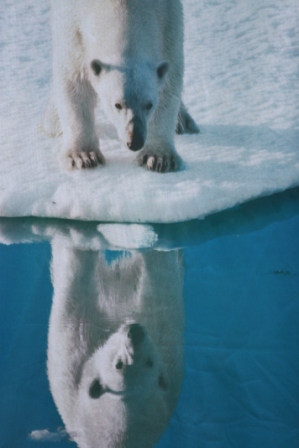


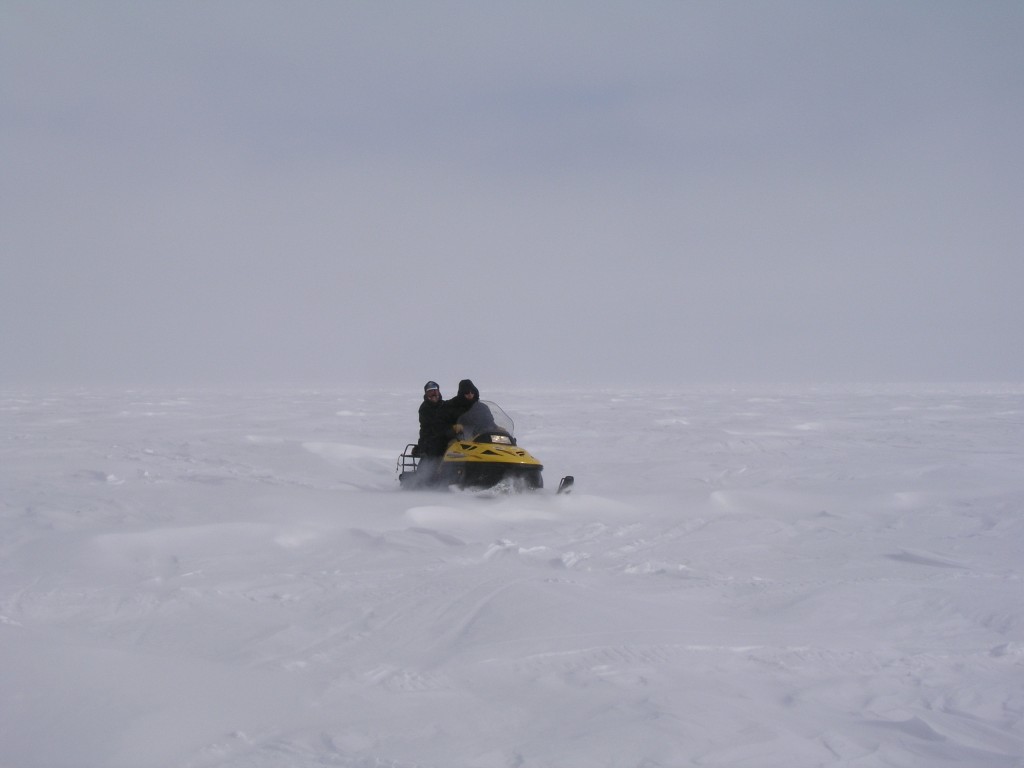





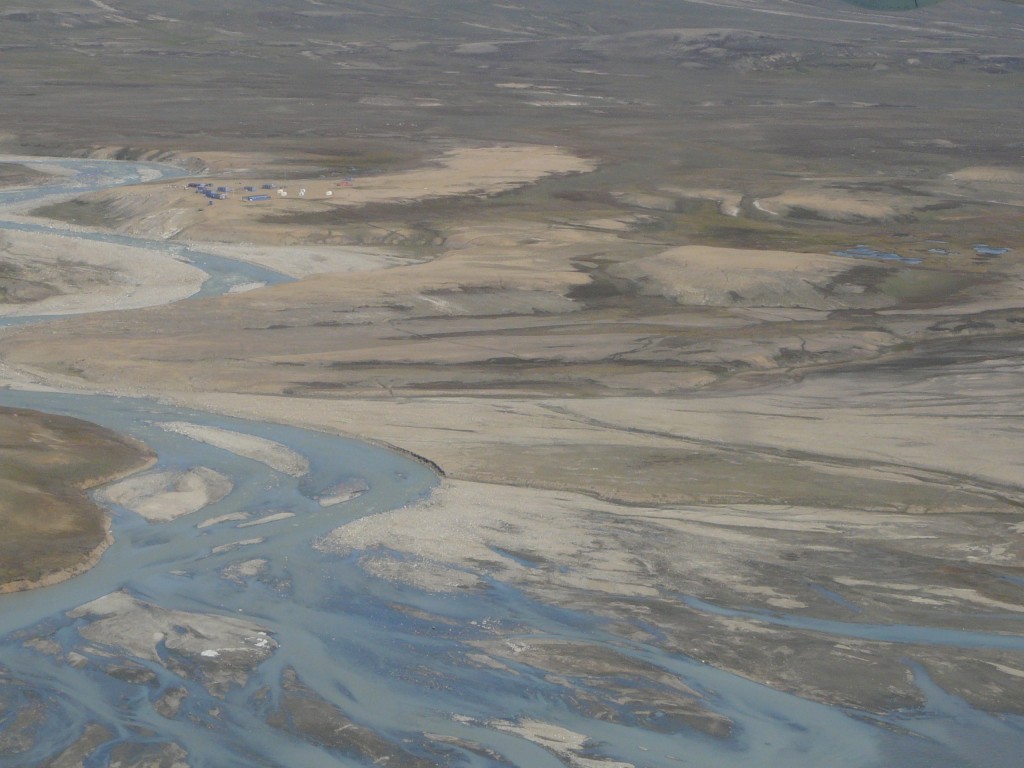
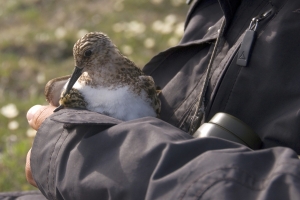
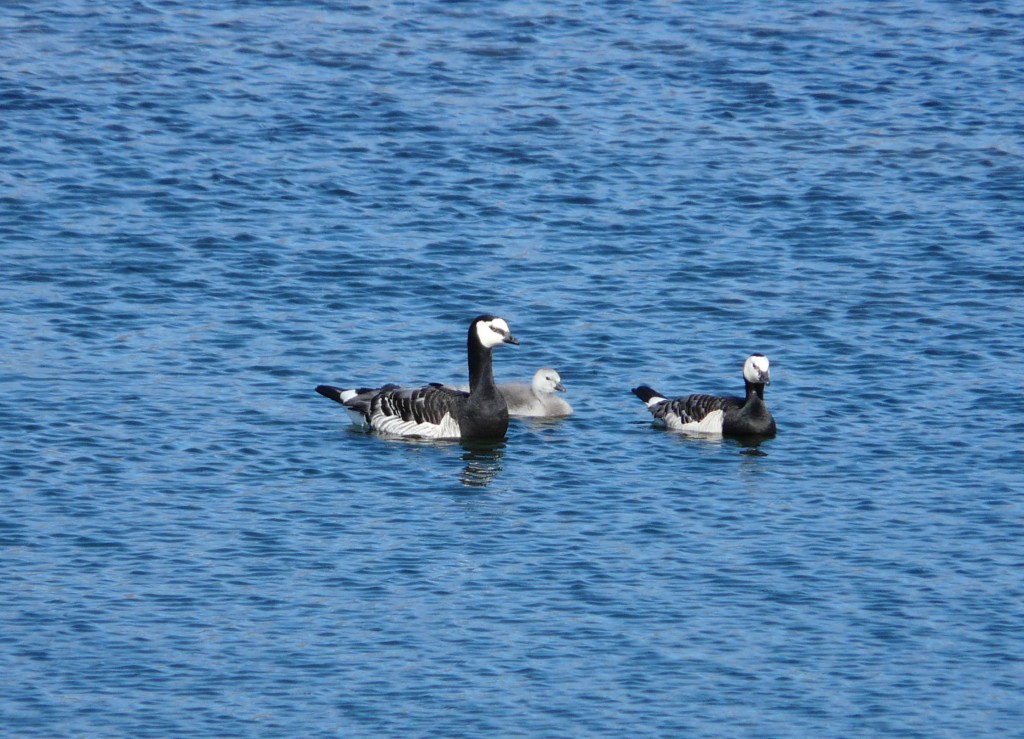
















Feedback